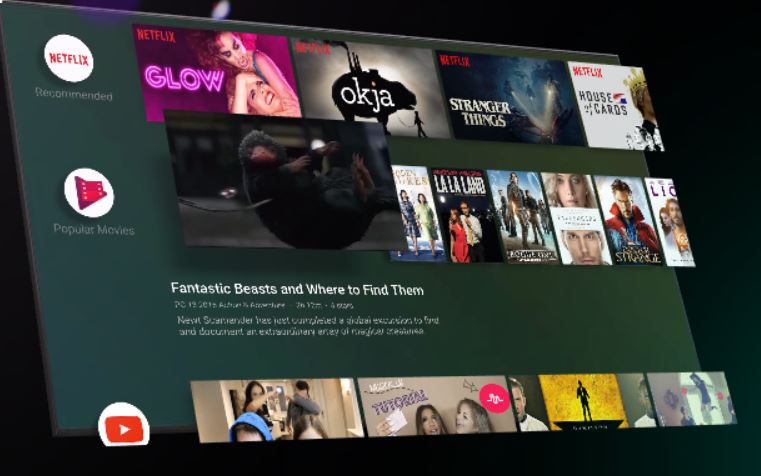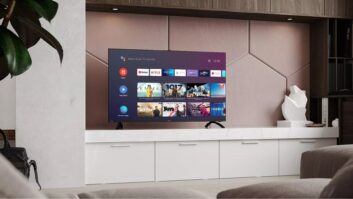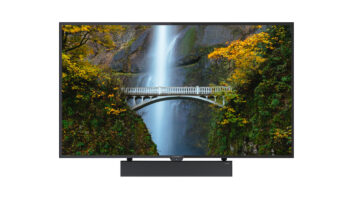
Smart speakers featuring voice assistants were the stars of last year’s CES. At this year’s show, attendees are seeing the spread of voice assistants to smart TVs, either via a smart speaker, a microphone-enabled remote control or even mics embedded in the TV itself.
We chatted with Shalini Govil-Pai, senior director of product management for Android TV, about the battle over both smart TV operating systems as well as how voice-controlled TV could soon become more the norm than the exception.
First, how big a purchase factor is the type of OS a smart TV has?

The OS itself has not been a big driving factor to date. Does it come with Google Assistant? Does it come with Netflix and YouTube? Those are the questions people ask. What are the consistent set of features you get when you buy a TV?
Recently things have started changing, where there has been a little bit more focus [on OS] from a variety of players. Google [is] focusing more on what the OS story is, because that automatically rings, that if I have this OS I actually get certain other things that come with it. It’s not clear to me how it’s going to play out, to be honest. I think some of this is going to shake out in the next year or two.
What reaction are you getting from consumers about having a computer-like OS on their TV?
What we hear from our consumers and intelligence we’ve gathered over the last year through a tremendous amount of market research is, hey, we thought OTT would make our life simpler — but it’s not. The data we have says that people are spending 40 minutes just to find what they want to watch. Google’s strength is in search and discovery. So how do we bring that strength of ours to the TV, to help people find content they want to watch? With Android Pie, we are making it even easier for users to set up their device and search for content.
Stay on top of CES with one-click access to TWICE’s CES Hub.
How important is voice control as a feature on a TV?
The goal of Android TV is to provide a simple, frictionless experience to users. Voice control by the Google Assistant has and will continue to play a major role in enabling this. Assistant delivers on all the direct TV controls mentioned — volume, channel change, content search and start/stop/pause a show — and can also control-smart home [functions] like temperature and lighting to set the ambience, and manage the user’s agenda, share recent news updates, lead an exercise or workout routine, order snacks, access a recipe, and more. Situated in the center of your home, Android TV devices are well-positioned to serve as the central control point for smart home devices.
Moving forward, we want Assistant to be part and parcel of every Android TV release. That is what consumers are asking for and that is what we are leaning on. Every single one of our partners see this and want it. We are aligned here — that voice is an important component of the home.
Android TV is on Sony TVs in the U.S., but other major TV brands are already aligned with other smart TV platforms. How do you plan to grow Android TV?
This week at CES, our partners launching Android TV devices include Sony, Hisense, Philips, TCL, Skyworth, Xiaomi, Haier, Changhong, JVC and Toshiba.
Operators are [a] big area we’re focusing on — we have more than 120 partners who are operators. As they see their consumers coming online wanting more and more OTT, what Android TV does is provide the best of both worlds — it helps them retain their live TV business while at the same time offering over-the-top. That’s really helping them insure their market share as their consumers’ tastes and preferences change.
We [also] are definitely looking at [the media streamer] market segment as well. [Editor’s Note: The Xiaomi Mi Box S is a media streamer that runs Android TV.] OTT boxes provide a much faster way to get to market, and people are also willing to change them faster, so they follow a little more of a mobile model in comparison. So, yes, there’s a lot of growth happening there.












